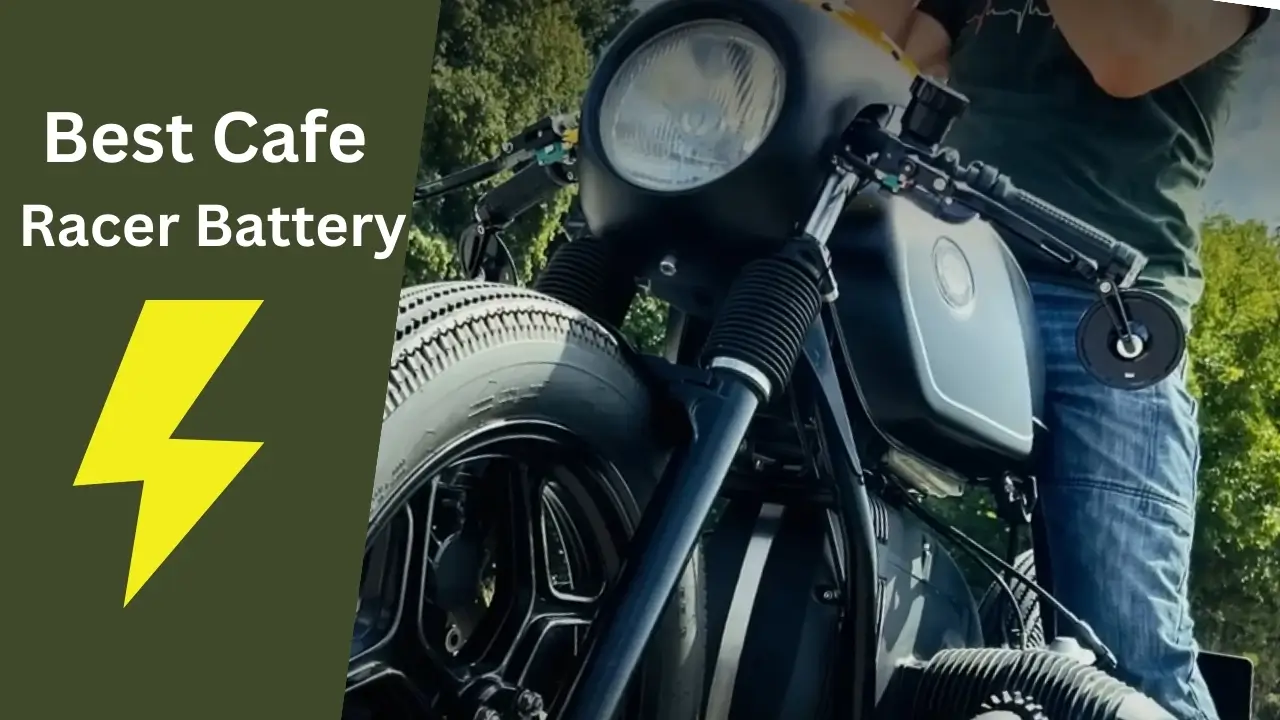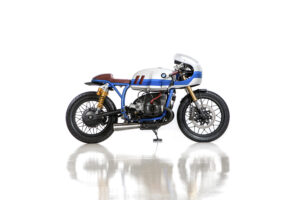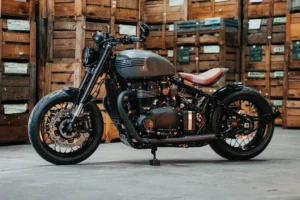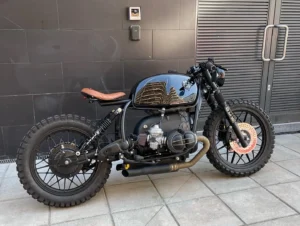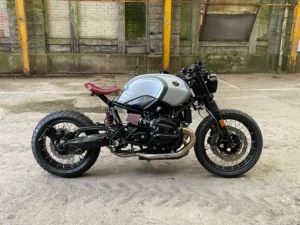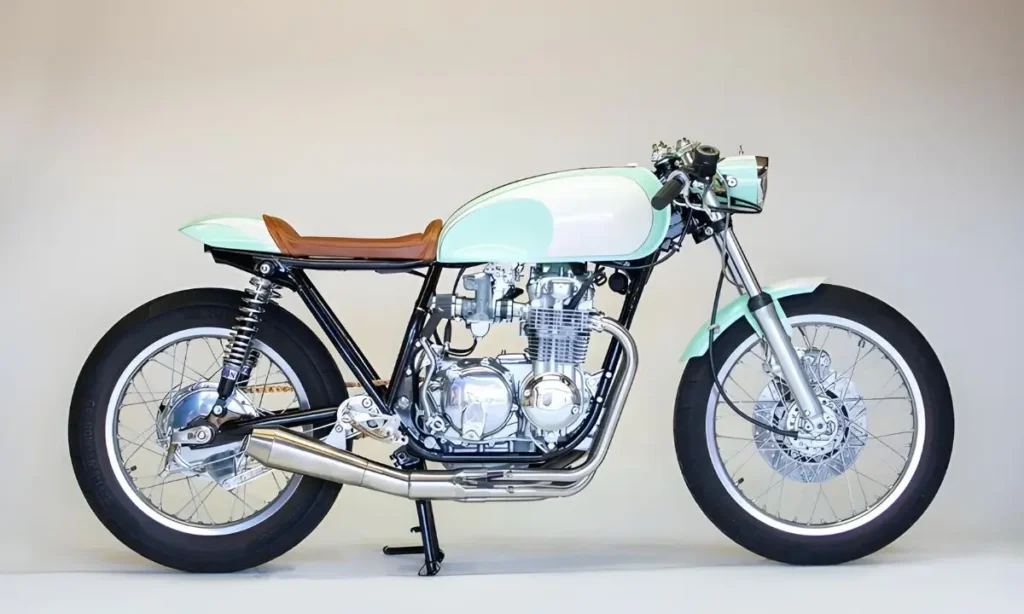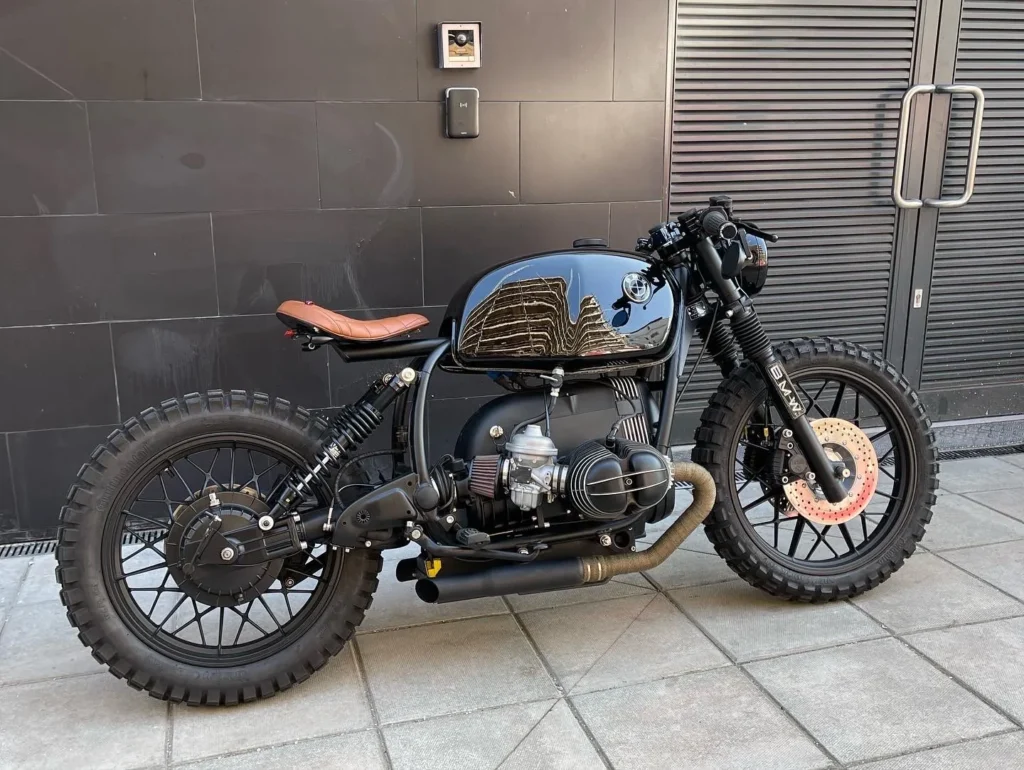Table of Contents
ToggleHey there, fellow cafe racer enthusiasts! If you’re anything like me, you know that every detail matters when it comes to our beloved bikes. From the sleek design to the roar of the engine, each component plays a crucial role. Today, I want to talk about something that often gets overlooked but is incredibly important – the cafe racer battery.
Choosing the right battery can make a world of difference in how your bike performs. It ensures your ride starts reliably and runs smoothly. In this guide, I’ll dive into everything you need to know about picking the best cafe racer battery, sharing my own experiences and insights along the way.
Understanding Cafe Racer Batteries
What is a Cafe Racer Battery?
Let’s start with the basics. A cafe racer battery is a specialized battery designed to meet the unique needs of cafe racer motorcycles. These bikes are known for their lightweight, streamlined design, and high performance. The battery isn’t just about starting the engine; it also powers all the electrical components. Over the years, I’ve learned that choosing the right battery can significantly enhance your bike’s performance and longevity.
One key aspect is understanding the electrical demands of your bike. Cafe racers, especially custom builds, often have unique electrical setups that require specific battery types. This is why it’s crucial to get a battery that not only fits physically but also matches the electrical specifications of your bike.
Types of Batteries for Cafe Racers
When I first started working on cafe racers, I was overwhelmed by the variety of batteries available. Here’s a breakdown of the main types:
Lead-Acid Batteries: These are the traditional, widely used batteries. They’re affordable, but they can be heavy and require regular maintenance. I’ve used them in a pinch, but they’re not my first choice. They’re good for those on a tight budget, but be prepared for the upkeep.
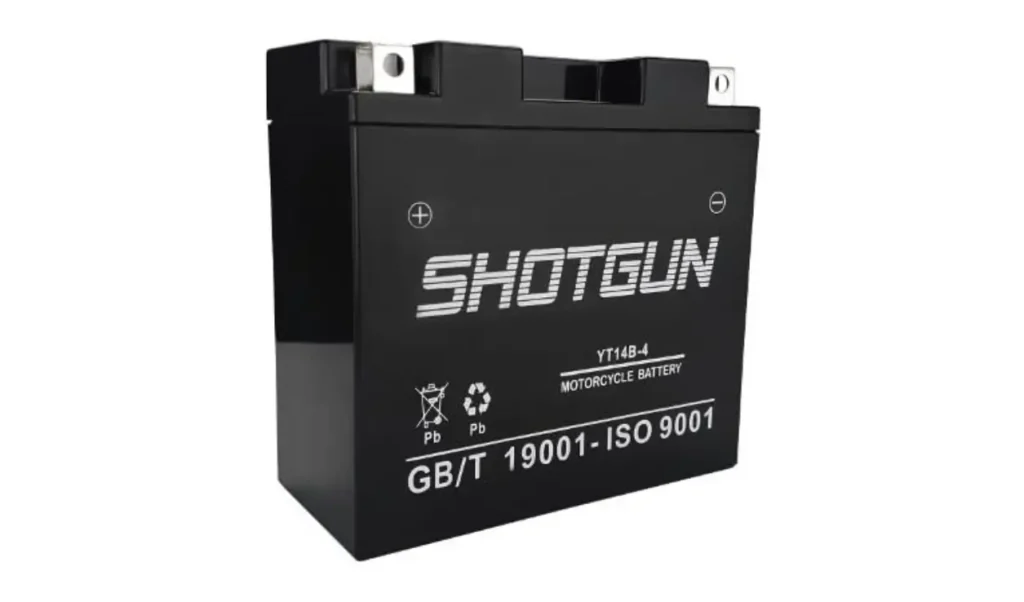
AGM (Absorbent Glass Mat) Batteries: These are a step up from lead-acid batteries. They’re known for their durability and maintenance-free nature. I find them quite reliable and a good middle-ground option. They offer a solid balance between performance and cost, making them a popular choice among cafe racer enthusiasts.
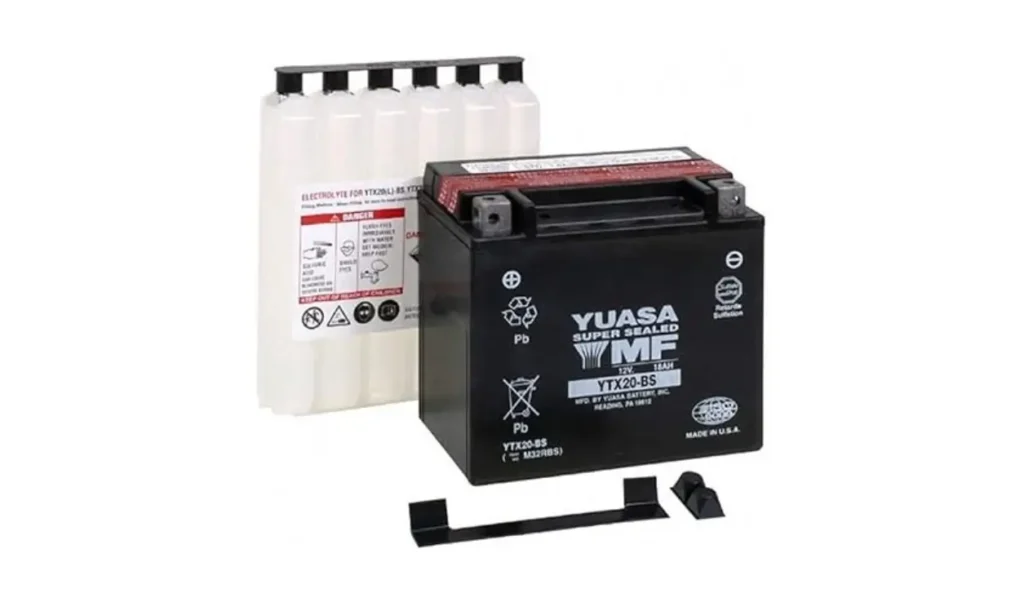
Lithium-Ion Batteries: These are the cream of the crop. Lightweight and powerful, they offer superior performance but come at a higher cost. I swear by these for serious builds. They provide excellent power output and longevity, but you’ll need to invest more upfront.
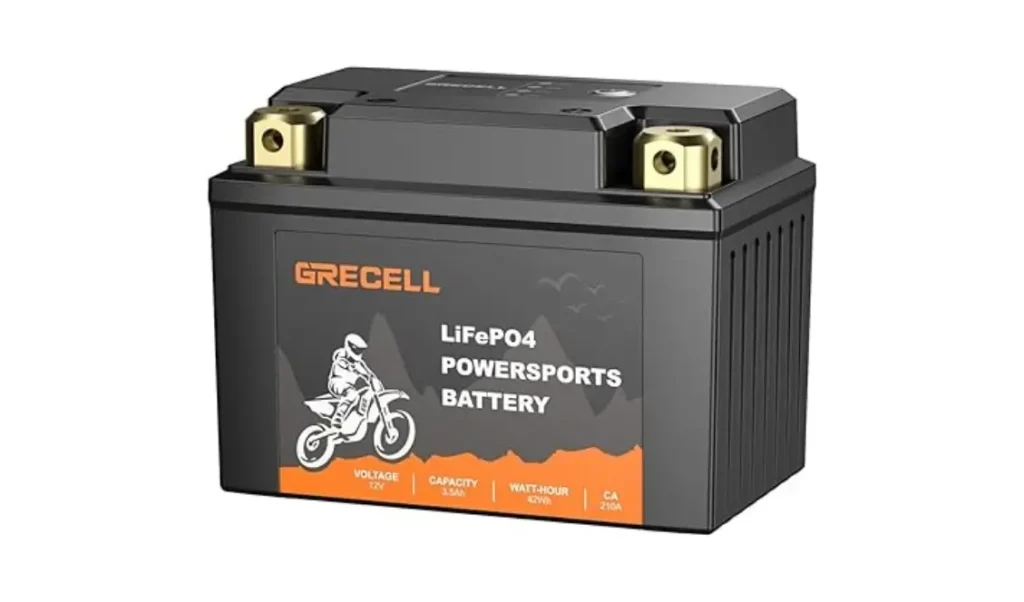
Gel Batteries: Similar to AGM but use a gel electrolyte. They provide stable performance in various conditions, making them a solid choice for long rides. They’re a good alternative if you want something that’s maintenance-free but with a bit more stability in different temperatures.
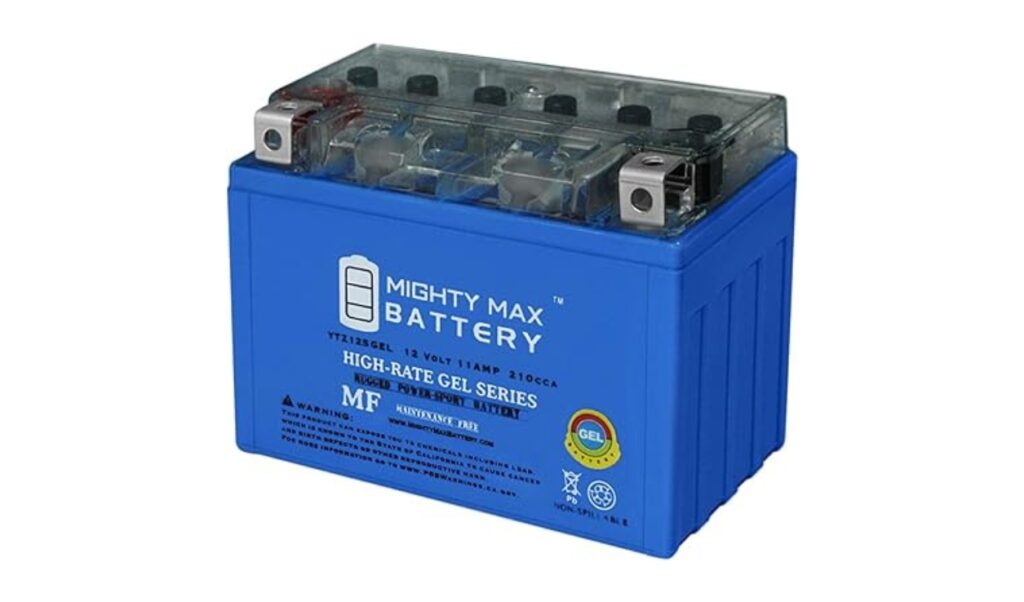
Key Factors for Choosing a Cafe Racer Battery
Battery Size and Fitment
One of the first lessons I learned the hard way was the importance of getting the right size. A battery that’s too large or too small can cause installation issues and affect performance. Always measure your bike’s battery compartment and consult the manufacturer’s specifications to ensure a proper fit.
The size of the battery also affects the bike’s aesthetics. Cafe racers are known for their clean, minimalist look, so you want a battery that doesn’t stick out or look out of place. I’ve had to return a few batteries because they just didn’t fit the way I wanted them to.
Performance Specifications
Performance is key, and there are a few specifications you should pay attention to:
- Cold Cranking Amps (CCA): This rating indicates the battery’s ability to start the engine in cold conditions. Higher CCA means better starting power. Trust me, it makes a big difference on those chilly mornings. I once had a battery with low CCA, and it struggled to start my bike on colder days. Lesson learned!
- Amp-Hour (Ah) Rating: Represents the battery’s capacity to deliver current over time. A higher Ah rating ensures longer-lasting power. I’ve found this particularly useful on longer rides. It’s like having a bigger fuel tank for your bike’s electrical system.
- Voltage: Most cafe racers use a 12-volt system. Ensure compatibility with your bike’s electrical system to avoid any issues. This is a straightforward spec, but it’s crucial. Don’t overlook it!
Durability and Lifespan
Durability and lifespan are crucial. You don’t want to be stranded with a dead battery in the middle of nowhere. AGM and lithium-ion batteries generally offer longer lifespans compared to lead-acid and gel batteries. Regular maintenance can also extend the life of your battery. I make it a point to check mine every few months.
When choosing a battery, look for ones with good reviews on their durability. I’ve had batteries that didn’t last more than a year, and it’s frustrating. Spending a bit more on a durable battery is worth it in the long run.
Weight and Aesthetics
Weight is another important factor for cafe racers, where every pound counts. Lithium-ion batteries are the lightest option, significantly reducing overall bike weight. Aesthetics are also important for custom builds, so choose a battery that complements your bike’s design. I love how a sleek, modern battery can enhance the overall look of my bike.
I remember switching to a lithium-ion battery and noticing an immediate difference in handling. The lighter weight made the bike feel more nimble, and I could tell it improved the overall performance.
Cost vs. Quality
Balancing your budget with quality and performance is crucial. While lithium-ion batteries are more expensive, their superior performance and longevity may justify the cost. Compare different brands and models to find the best value for your needs. Over the years, I’ve realized that sometimes it’s worth spending a bit more upfront for a battery that lasts longer and performs better.
I’ve made the mistake of going for the cheapest option, only to end up replacing the battery sooner than expected. Now, I focus on finding the best value – a balance of cost, performance, and longevity.
Environmental Impact and Battery Disposal
When choosing a cafe racer battery, it’s important to consider the environmental impact of each type. Lead-acid batteries, for example, contain harmful chemicals that need to be disposed of properly to prevent environmental damage. Lithium-ion batteries are more eco-friendly but still require proper recycling.
- Lead-Acid Batteries: Must be recycled at designated recycling centers. Many automotive stores offer recycling services.
- Lithium-Ion Batteries: Can be recycled, but it’s important to check with local regulations and recycling facilities.
- AGM and Gel Batteries: Similar to lead-acid in terms of recycling needs.
For more information on battery recycling, visit [recycling guide links].
Detailed Comparison Charts
Comparison Charts
| Battery Type | Pros | Cons | Cost Range | Lifespan |
| Lead-Acid | Affordable, widely available, reliable performance | Heavy, requires maintenance, shorter lifespan | $30 – $70 | 2-3 years |
| AGM | Maintenance-free, durable, better performance | Heavier than lithium-ion, higher cost | $50 – $150 | 3-5 years |
| Lithium-Ion | Lightweight, high performance, long lifespan | Higher initial cost, specific charging requirements | $100 – $300 | 5-7 years |
| Gel | Maintenance-free, stable performance | Similar weight to AGM, moderate cost | $70 – $150 | 3-5 years |
Real-World Usage Scenarios
Real-World Usage Scenarios
- City Commuter: A rider who primarily uses their cafe racer for short city commutes might find a lead-acid or AGM battery sufficient due to their reliability and lower cost.
- Long-Distance Rider: Someone who takes their cafe racer on long road trips might prefer a lithium-ion battery for its lightweight and long-lasting performance.
- Vintage Enthusiast: A vintage cafe racer owner might choose a gel battery for its stability and maintenance-free characteristics, ensuring consistent performance in various conditions.
Battery Maintenance Myths and Facts
Battery Maintenance Myths and Facts
- Myth: You don’t need to maintain a maintenance-free battery.
- Fact: While maintenance-free batteries require less upkeep, it’s still important to check terminals and keep them clean.
- Myth: Overcharging a battery doesn’t cause harm.
- Fact: Overcharging can significantly reduce a battery’s lifespan. Use a smart charger to prevent this issue.
- Myth: Storing a battery in cold conditions doesn’t affect its performance.
- Fact: Extreme temperatures can impact battery performance and lifespan. Store batteries in a controlled environment.
Best Cafe Racer Batteries: Recommendations
I’ve tried and tested various batteries over the years. Here are my top recommendations:
Best Lead-Acid Batteries
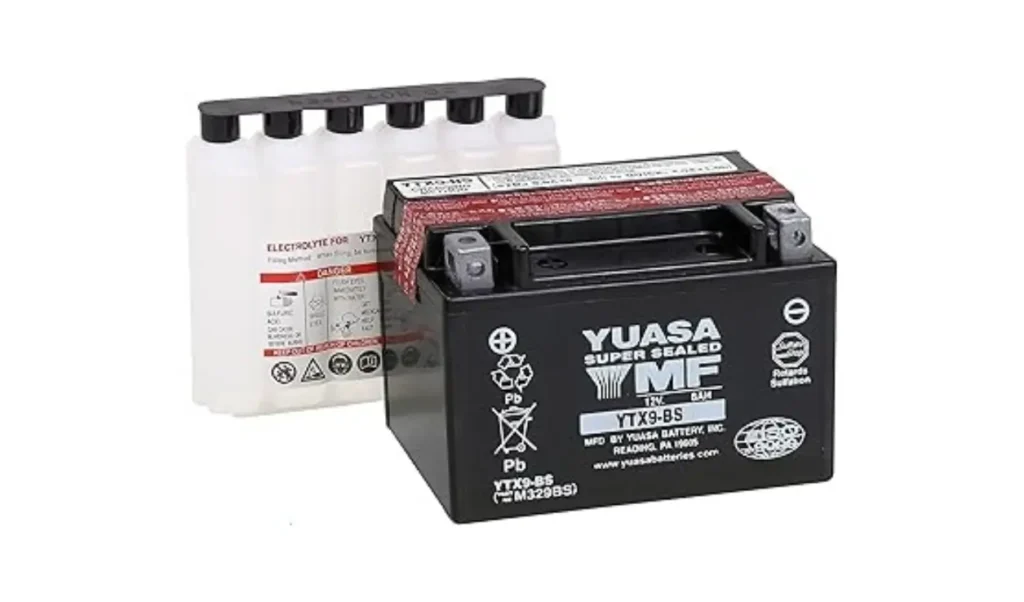
- Pros: Affordable, widely available, reliable performance.
- Cons: Heavy, requires maintenance, shorter lifespan.
- Review: Reliable and affordable, ideal for budget-conscious riders looking for a traditional battery. I’ve used this one on a few budget builds, and it’s never let me down.
Best AGM Batteries
OPTIMA Batteries OPT8003-151 RedTop
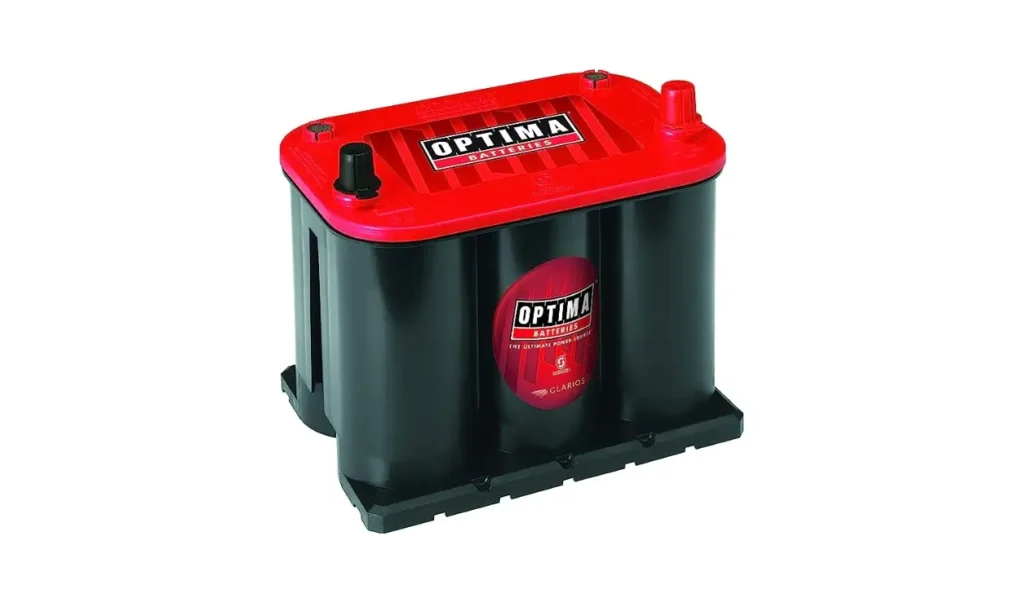
- Pros: Maintenance-free, durable, better performance.
- Cons: Heavier than lithium-ion, higher cost than lead-acid.
- Review: A robust and maintenance-free option that offers better durability and performance. This is my go-to for mid-range builds.
Best Lithium-Ion Batteries

- Pros: Lightweight, high performance, long lifespan, fast charging.
- Cons: Higher initial cost, specific charging requirements.
- Review: Lightweight and powerful, this battery offers superior performance and longevity. I use this on my personal cafe racer, and it’s worth every penny.
Best Gel Batteries

- Pros: Maintenance-free, stable performance, vibration resistant.
- Cons: Similar in weight to AGM batteries, not as lightweight as lithium-ion.
- Review: Offers stable performance and is resistant to vibrations, making it a reliable choice. This is great for long-distance rides where reliability is key.
Which Battery is Best for Your Cafe Racer?
If you’re looking for a personal recommendation, I’d say go for a lithium-ion battery. Based on my experience, the Shorai LFX14A4-BS12 has been a game-changer. Its lightweight design and high performance make a noticeable difference in handling and reliability. While it’s a bit more expensive upfront, the longevity and performance gains are well worth the investment.
For those on a tighter budget, the Optima Batteries 8020-164 35 RedTop AGM battery is a solid choice. It’s durable, maintenance-free, and offers excellent performance, making it a great middle-ground option.
Installation and Maintenance Tips
I’ve learned a few tricks over the years when it comes to installing and maintaining batteries.
Step-by-Step Installation Guide
- Gather tools: Wrench, screwdriver, and safety gear.
- Remove the old battery: Disconnect the negative terminal first, followed by the positive. This prevents any short circuits.
- Install the new battery: Connect the positive terminal first, then the negative. Make sure the connections are tight.
- Secure the battery: Ensure it is firmly in place to prevent vibrations. This can extend the life of your battery.
When installing, take your time and double-check all connections. A loose connection can lead to performance issues or even damage to your bike’s electrical system.
Maintenance Tips
- Regularly check and clean terminals to prevent corrosion. I use a simple wire brush for this.
- Ensure the battery is securely mounted. Loose batteries can cause all sorts of issues.
- If storing the bike, keep the battery on a trickle charger. This keeps it charged without overcharging.
Keeping your battery in good condition can extend its lifespan and ensure your bike is always ready to ride. I make it a habit to check my battery every few months, especially before long rides.
Real-Life Testimonials and Case Studies
Over the years, I’ve talked to a lot of fellow cafe racer enthusiasts about their battery choices. Here are a few stories:
Interviews with Cafe Racer Enthusiasts
“I switched to a lithium-ion battery, and the difference in performance was night and day. My bike starts instantly, and the weight reduction is noticeable.” – John, Cafe Racer Enthusiast
“Using an AGM battery has been a game-changer for me. It’s maintenance-free, and I don’t have to worry about checking the water levels or dealing with leaks.” – Sarah, Motorcycle Builder
Case Studies
A case study on a vintage cafe racer upgraded with a lithium-ion battery showed a 20% improvement in starting reliability and a 15% weight reduction. This is just one example of how a quality battery can transform your ride. Another rider reported that switching to an AGM battery eliminated their starting issues and provided consistent performance throughout the year.
Conclusion
Choosing the right battery for your cafe racer is crucial for optimal performance and reliability. Consider factors such as size, specifications, durability, and cost when making your decision. Investing in a high-quality battery will enhance your riding experience and ensure your bike runs smoothly.
I’ve learned through experience that a good battery can make all the difference. Whether you’re building a new custom bike or maintaining an old favorite, take the time to choose the right battery. It’s an investment that pays off every time you hit the road.
Frequently Asked Questions (FAQs)
How often should I replace my cafe racer battery?
Typically, every 2-5 years, depending on usage and maintenance. I keep an eye on mine and replace it as soon as I notice any drop in performance.
Can I use any 12-volt battery for my cafe racer?
It’s best to use a battery specifically designed for motorcycles to ensure proper fitment and performance. Trust me, it’s worth getting the right one.
What’s the difference between AGM and Gel batteries?
Both are maintenance-free, but AGM batteries use a fiberglass mat to absorb the electrolyte, while gel batteries use a gel electrolyte. AGM batteries are generally better for high-performance needs.
How do I know when my battery needs replacing?
Signs include difficulty starting your bike, dimming lights, and a drop in overall performance. If your battery is more than a few years old and showing these signs, it’s time for a replacement.
Can I upgrade from a lead-acid battery to a lithium-ion battery?
Yes, but you’ll need to ensure compatibility with your bike’s charging system. Some older bikes may require adjustments to handle a lithium-ion battery.

